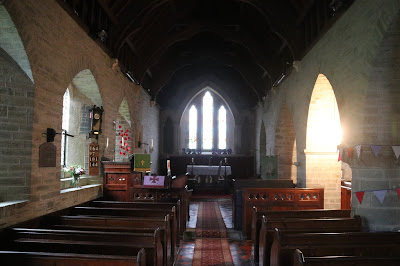The church and holy well in St Clether are dedicated to Saint Cleder (or Clederus), one of the twenty-four children of Brychan. The church is of Norman origin, with a 15th century tower and (apart from the tower) was rebuilt in 1865.
Brychan was a legendary Celtic king (originally born in Ireland) who ruled over Breconshire in South Wales and was viewed as the father of the Celtic saints. Several mediaeval manuscripts state that he was married three times but the numbers of children vary from 12 to 63 with 24 being the most commonly reported number. There is also little agreement in the lists of names between Cornish and Welsh manuscripts. It is thought that the list of his children may have grown over time as more people claimed themselves or their local saint to be descended from what was seen as the holy family. Most of his children were reported to have evangelised Cornwall and North Devon, with many of the churches dedicated to them. Consequently, many of the place names in North Cornwall (St Teath, St Mabyn, St Endellion, St Minver, St Clether, Egloshale, Egloskerry, Advent, Morwenstow, Lelant etc) are associated with the names of his children. |

























No comments:
Post a Comment